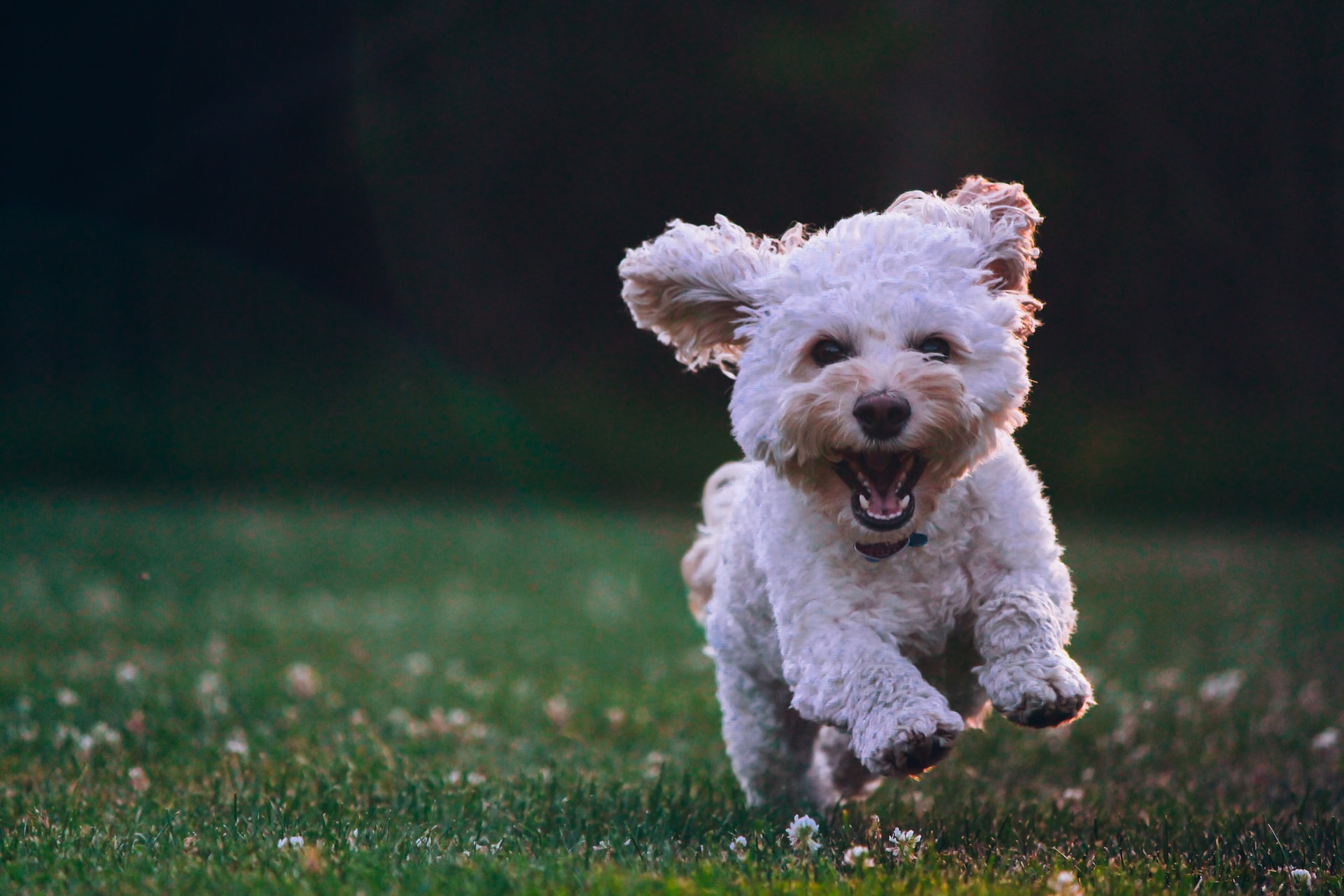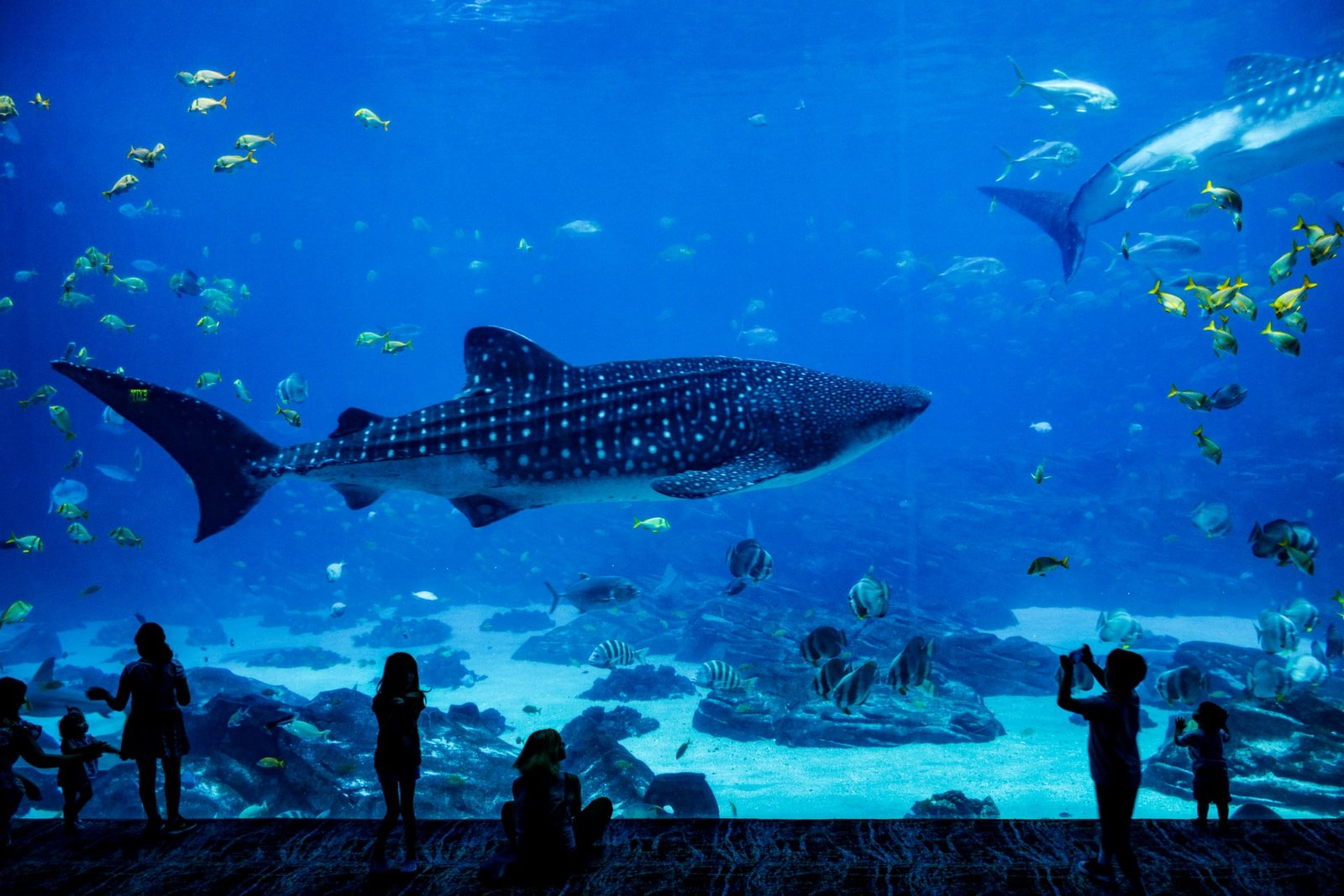
10 New Puppy Tips You Need To Know
Congratulations on your new puppy! Whether you are a first-time dog parent or an experienced owner, this is bound to be an exciting time in your life.
Your new little fluff ball might be a handful, but we believe that raising a puppy is one of the most rewarding experiences life has to offer. We wanted to share some of our best puppy advice, from one pet parent to another. That’s why we’ve created this blog post with our top 10 tips and tricks to help you and your new best friend get settled in.
1. Find service providers before you bring your puppy home.
Some of the most important puppy preparations should happen before you even pick up your new pal. That way, when you do bring your dog home, you can focus on fetching and snuggles––not tracking down the number of the local vet. Ask around for recommendations on trusted service providers in your area, including a vet, dog walker, boarding facility, and a groomer. You might also want to talk to neighbors, friends, and family who can help if you need a puppy-sitter or an emergency walk. Get your “pack” together!
2. Plan ahead for your dog’s health and wellness needs.
A healthy life starts the moment you bring your puppy home. We recommend planning in advance to set up the necessary vaccines, plan a spay or neuter appointment, and stock up on flea and tick medication. You also might want to sign up for a wellness check with your veterinarian. It’s crucial to know that your puppy is in good health when you first come home from the breeder or shelter, that way if something is wrong, you can address it early and contact the people who cared for your pup before they came home! If your dog does have a medical issue now or later on, Bivvy’s pet insurance can help offset the cost of those (often really expensive) vet bills. Just like your own health insurance, it’s a smart investment that can give you some peace of mind.
3. Set your dog up for success by puppy-proofing your home.
Your dog doesn’t know the difference between an irreplaceable heirloom and a fun toy––make sure the only things within their reach are safe for them to have. Before you welcome your pet home, put yourself in their “paws”: what would be tempting to chew? Clean up clutter, pick up shoes, consider putting away those expensive decorative pillows for the time being. We also recommend doing some research on foods, houseplants, and other products that are unsafe for dogs.
There are lots of items in our home that seem innocuous to us like chocolate or a potted snake plant that can actually be poisonous if your dog gets into it. By making sure all of these potential hazards are picked up and out of reach, you’ll be setting your dog up for success.
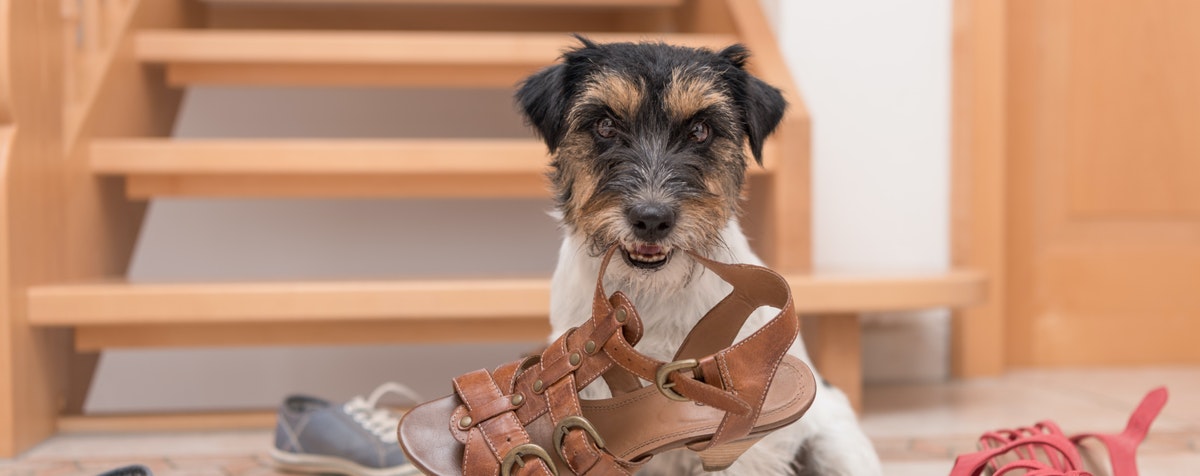
4. Pick your potty training method.
Speaking of accidents, let’s talk about potty training! Did you know that there are many different ways to potty train your dog? Some pet parents prefer artificial grass versus potty pads. Others set up a bell training system or just stick to a strict timesheet. But, crate training is one of the most popular methods! A crate is a valuable tool in the potty training process. Since your puppy doesn’t want to soil their living space, they are less likely to go potty while in the crate. (This is why it’s important that your crate is the right size for your pup––if the crate is too large, your puppy might designate a corner as a potty area. Puppy dividers can help prevent this!)
5. Establish a routine from the get-go.
Another tip is to set up a schedule for your pup, including crate training, mealtimes, walks, and potty breaks. Puppies thrive on routine and it’s a great way to help them get used to their new lifestyle. Plus, a routine will assist with potty training. Puppies can only hold their bladder for one hour for every month of age, so letting them out at regular intervals can help prevent accidents. Have your dog spend some time in the crate and when it’s time for a potty break, let them out to teach them that leaving the crate is a part of the potty routine. Feeding your dog on a schedule will also make the potty training phase easier. Plan walks or time outdoors right after your puppy eats or drinks, as well as first thing in the morning and right before bed to give them a chance to go to the bathroom.
6. Create positive associations with your dog’s crate.
Crates aren’t just a place for your dog to stay while you’re away! Your dog’s crate should be their sanctuary and a safe zone that’s just for them, anytime they want to rest. We recommend getting started with crate training early on to help your puppy get used to their home. Creating positive associations with the crate will show your pup that it’s a happy place to be. Adding a few crate-safe toys, treats, or a training aid will help your puppy want to spend time inside. It’s also a good idea to keep the crate in a place where you hang out a lot, like a living room, so that your pup can still feel like they’re a part of the action! But, especially if your children are younger, teach them that when Puppy is in the crate, he is not to be bothered or played with.
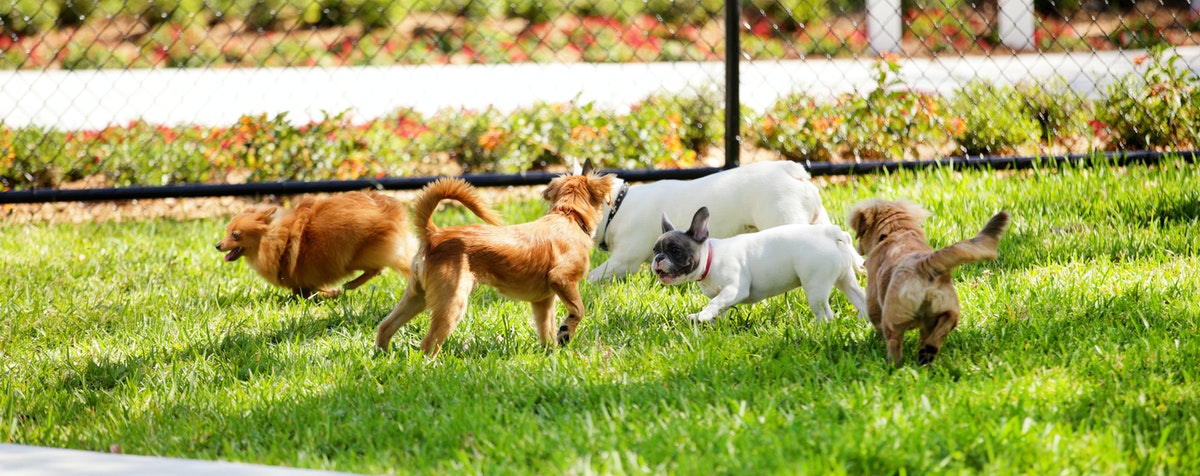
7. Expose your dog to new settings and experiences.
When you’re a young pup, the world is wide and new. Loud sounds, different smells, and new experiences can be confusing and maybe even a little scary. As a dog parent, it’s essential to gradually expose your pup to stimuli they might encounter as an adult so that they can get used to it. But, never force your puppy into a new situation too quickly. Instead, pair experiences such as ringing the doorbell, knocking on the door, going for a quick car ride, or turning on the vacuum with something wonderful like treats, pats, or praise.
8. Socialize with other pups (and pet parents).
Socializing your dog during the first 3 months is super important––and fun! Both you and your dog will love hanging out with new friends and exploring new places together. First, consult with your vet to find out when your dog will be ready to roam in high traffic areas and meet other dogs out in the world. They will need to be up to date on vaccinations or medications. When it’s time, set up playdates in a contained, supervised environment, and be sure to keep an eye out to see how the pups are getting along.
During the pandemic, socialization is a little bit more difficult. Since it’s important to social distance and minimize contact as much as possible, there are fewer opportunities to meet other pups and pet parents. This is a great time to work on other aspects of socialization, like exposing your dog to new experiences, stimuli, and settings. Play new sounds like the doorbell or vacuum, practice handling by touching their ears, paws, etc. as a groomer would, and try walking on new surfaces like concrete or grass! When you do venture outdoors, one tip is to use a longer leash in order to maintain more than 6 feet of distance between you and other pet parents.
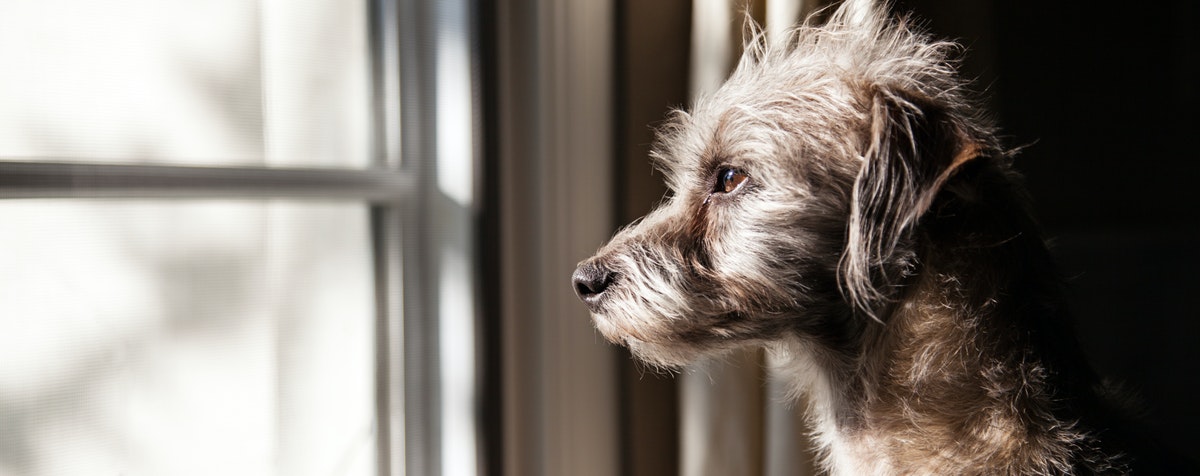
9. Help curb separation anxiety.
We’ve all been there––when you first bring a new puppy home, you want to spend every single moment together! You might feel guilty leaving your pup alone. However, it’s important to give your puppy some safe alone time, too. First, make sure your dog is in a comfortable and secure spot, like their crate. Next, try leaving for short intervals, before gradually increasing time apart. Give your puppy something fun to do to pass the time, like chewing on a food-stuffed toy. This way, your puppy can get used to being on their own and start to understand that even though you leave for a bit, you’ll always come back! As excited as you both are to be reunited, when you do return home try to stay calm. Puppies are really good at picking up on our energy––if you are overexcited, your pup will match you and might be more likely to bark or jump. Consider not letting Fido out of the crate until he is calm and let him settle in before giving him too much attention. That way, you will teach him that leaving and coming home is a normal process and NBD.
If you suspect your dog has already developed separation anxiety and doesn’t seem to be responding to your efforts, it’s a good idea to get a professional involved. The longer you wait, the worse this behavior will get and it might even lead to other issues like destructive chewing. Training experts can work with your dog to address this anxiety and help them feel better.
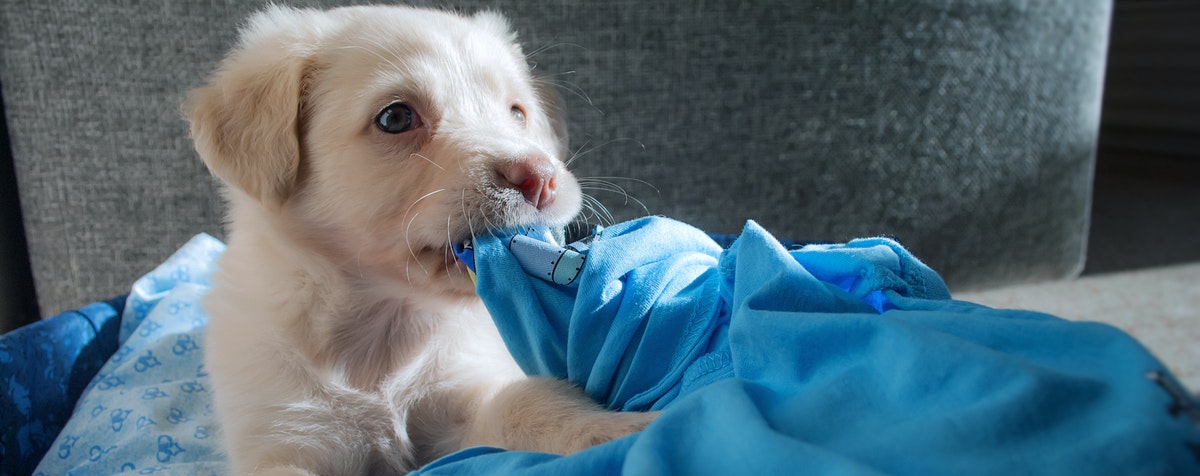
10. Tackle teething early.
Just like babies, every puppy goes through a teething stage. If your pup tends to bite a little bit, that’s perfectly normal! But, try to address the behavior early so that it doesn’t become a bigger issue down the line. What’s cute in a tiny puppy isn’t fun in a full-grown dog. There are tons of helpful tricks out there, such as freezing treats and providing toys designed especially for teething. If your puppy gets too mouthy with you, you can say “Ouch!” in a high-pitched voice then walk away and give them a few minutes to calm down.
Wishing you the best of luck with you and your pup’s training journey! We know how special these times with your new best friend are and we hope you treasure these moments together. They grow up so fast!
